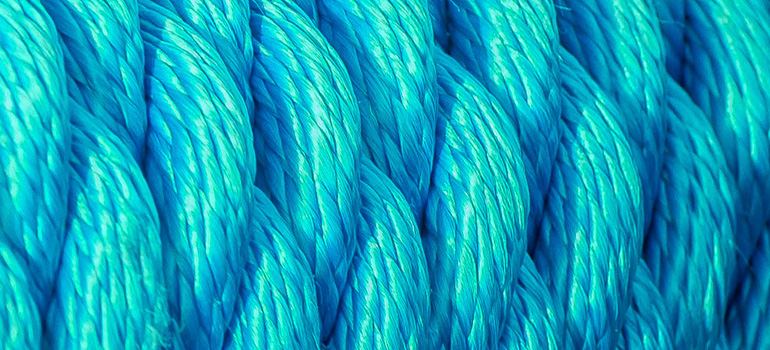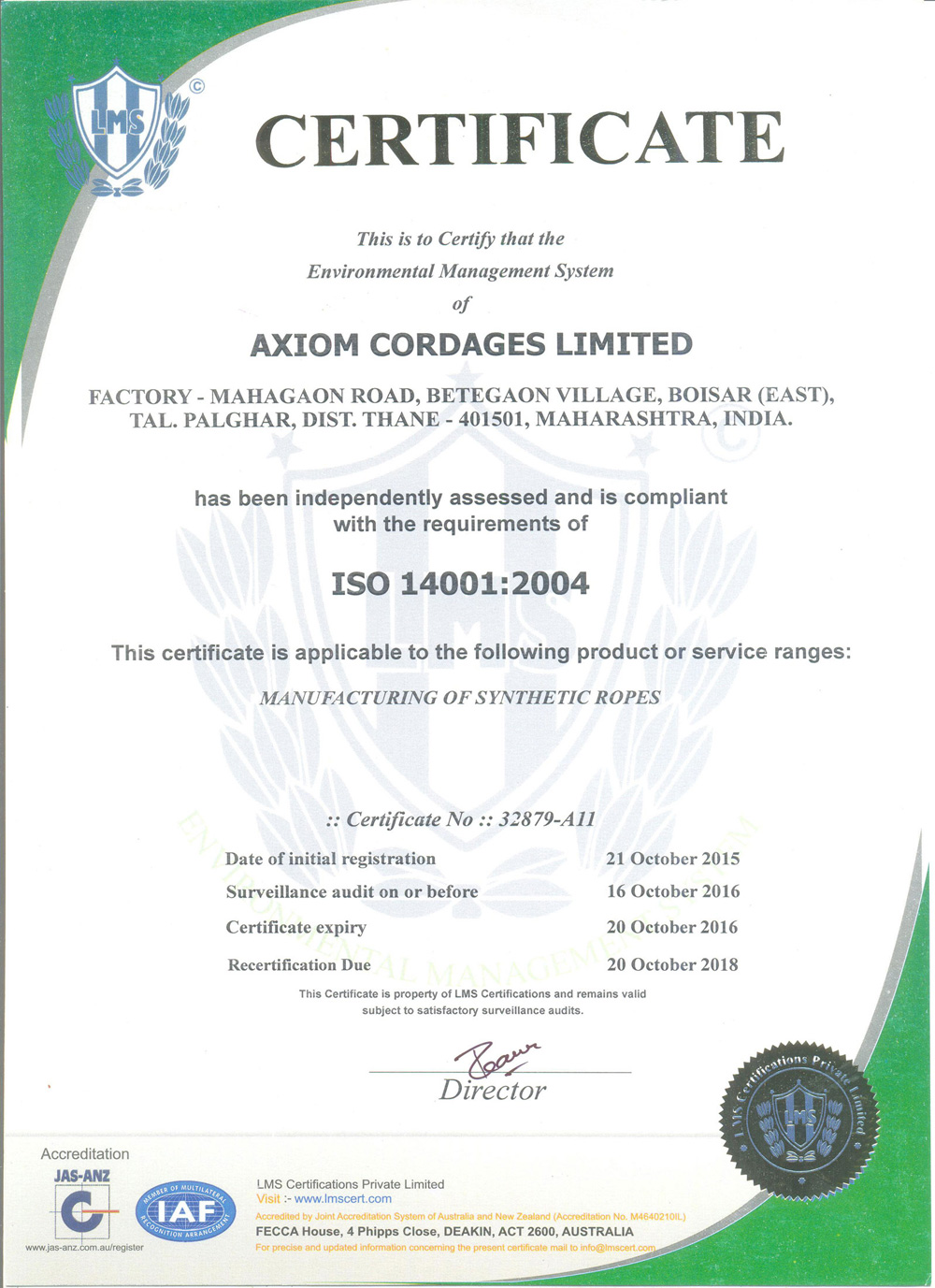Rope Utility
This is very critical and one need’s to have a degree of expertise to ascertain the quality and various attributes of the rope.
- Ropes that show signs of aging, wear and tear must be avoided.
- Ropes should be inspected regularly for evidence of chemical attack, kinking, and surface abrasion including major yarn or strand cuts and heat fusion indicated by glazed or heavily fuzzed areas.
- Braided ropes should be examined along their entire length for areas of stiffening or inconsistent diameter, which can be sign of internal damage or core failure due to overloading or severe shock loads. Both outer and inner rope fiber contribute to the strength of the rope and when either is worn, the rope is naturally weakened.
- No type of visual inspection is a guarantee to an accurate determination of residual strength. When the fibers show wear in any given area. If limited to one small section the damaged area may be cut out and the re spliced, otherwise the rope should be downgraded or replaced.
Bending Radius
Sharp bends around any equipment should be avoided as, under load, it decreases rope strength substantially and may cause premature damage and failure. The diameter on fixed pin termination should be at least 3 times the rope diameter and on rotating sheave blocks, it should be 10 times the rope diameter for twisted ropes and 8 times the rope diameter for braided ropes.
Storage
For the long life and to maintain the effectiveness of the rope below measures are highly recommended:
- Ropes should be stored on a clean and dry place without exposing them to the direct sunlight or any other potential substance or form that can cause damage to the rope.
- It is advisable not to keep Ropes on the floor and should be kept at some distance away from metal walls or steam pipes to avoid the risk of possible corrosion or typical wear and tear.
- To maintain the longevity of the ropes, it should never be stored on concrete and dirty floors and never dragged over rough surfaces as the dirt accumulated on the rope will cause damage to the inside fibers.
- In case of long term storage, ropes should be cleaned with fresh water to reduce salt crystals that may affect its life and efficiency.
Working Loads
Working loads are the loads that a rope is subjected to when in activity. They are normally expressed as a percentage of new rope strength and should not exceed 20% of published strengths. (Many industries are subject to special working loads regulations that supersede a manufacturer’s recommendation.)
When severage due to overloaded or shock loads take place, the rope can suffer damages and consequently strength losses without any visible indication, which may weaken the rope and cause it to break during its next use even if used under normal working loads. Sharp bends should be avoided as, under load, it decreases rope strength substantially and can cause premature failure
Protecting Your Rope
All ropes should be protected against sharp and abrasive surface. Wire ropes tent to score and gouge chocks and bitts creating cutting edges that can damage synthetic ropes. Weld beads on repaired capstands, fairleads, etc. are equally damaging unless dressed down smoothly.
Splicing & Knots
- The use of knots can reduce rope strength over 50%, so whenever possible splices should be used instead. Variations up to 25% can occur with poor splicing or very short length. According to each situation always take into consideration the corresponding reduction to the rope strength adjusting the working loads accordingly. When splices are used always use recommended splicing procedure of the manufacturer.
- The length of an eye in rope should be minimum of three times, and preferably five times the diameter of the item around which it is to be used. This will ensure that the angle between the two legs of the eye will not cause a tearing action to the throat of the eye. For instance if the eye of a mooring line is a passing around a 600 mm diameter bollard then the eye should be minimum of 1.8 meters.
Handling
Handling is a very important criteria, to maintain the life and quality of the ropes, below are some pre-requisites for effective handling of the ropes:
- When a rope is supplied in a coil it should always be uncoiled from the inside so that the first turn comes off from the bottom in a counter- clockwise direction.
- When supplied on reels, it must be allowed to freely rotate so that the rope can be drawn off the top layer. Never take a rope from reel lying on its side.
- A wrong coil or uncoil on a twisted rope will provoke kinking and hockling. Three and four strand ropes should be coiled in clockwise direction (In lay’s direction) and uncoiled in a counter – clockwise direction to avoid hockling and kinking.
- Braided ropes will not kink or hockle, however, a twist can be produced in to ropes during service. Excessive twist may cause an imbalance between the right and left hand strands and should be removed as soon as possible by counter rotating the rope when it is relaxed. The best method for storing both braided and twisted ropes is in an eight figure fashion.
Rope Safety
Rope safety is also an important aspect, if not handled correctly it may cause grievous injuries, below is some guidance on rope safety:
- Always follow correct safety procedure; never stand in line with a rope under tension. If a rope fails it can be drawn back with sufficient force to cause serious injuries.
- It is always advisable to train staff with the correct procedure and equip them with the right tools for appropriate handling and storage of the ropes.








